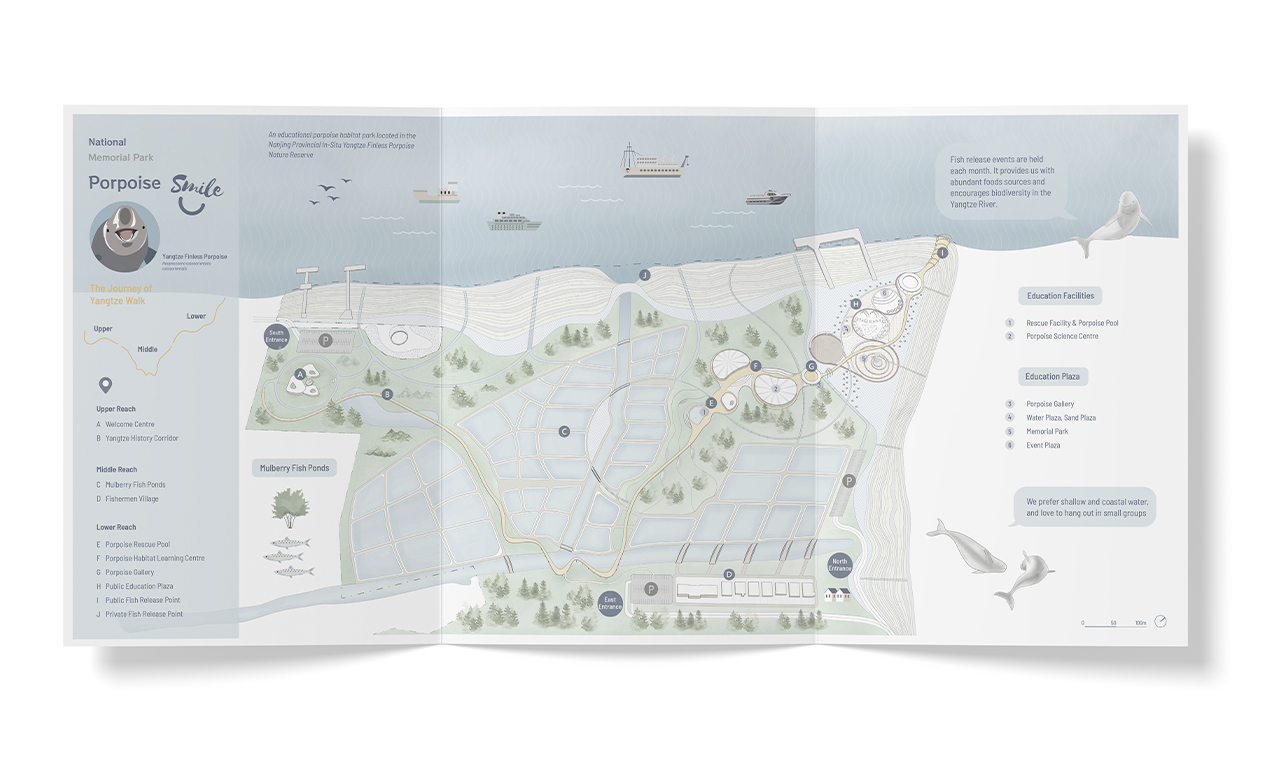This thesis addresses the long history of detrimental human activities on the Yangtze River that has resulted in a systematic decline of the Yangtze Finless Porpoise population. The proposed urban porpoise reserve in Nanjing, China will create a unique opportunity to help safeguard this critically endangered species by restoring degraded habitat in a highly visible and public context. Design interventions will construct a public porpoise habitat that helps restore the river’s damaged ecology, encourages biodiversity, and raises awareness by engaging and educating people, all of which will aid in preventing this critically endangered species from extinction.

Today’s Yangtze River is faced with various problems that arise between conservation and development. There are tens of thousands of large and small hydroelectric stations in the Yangtze River Basin, that have changed the country’s hydrology.

Ten nature reserves established along the Yangtze River are to protect the Baiji and the porpoise. Following the Baiji’s “functional extinction”, the urgency to conserve the remaining population of the porpoise is a priority and requires even more immediate action.
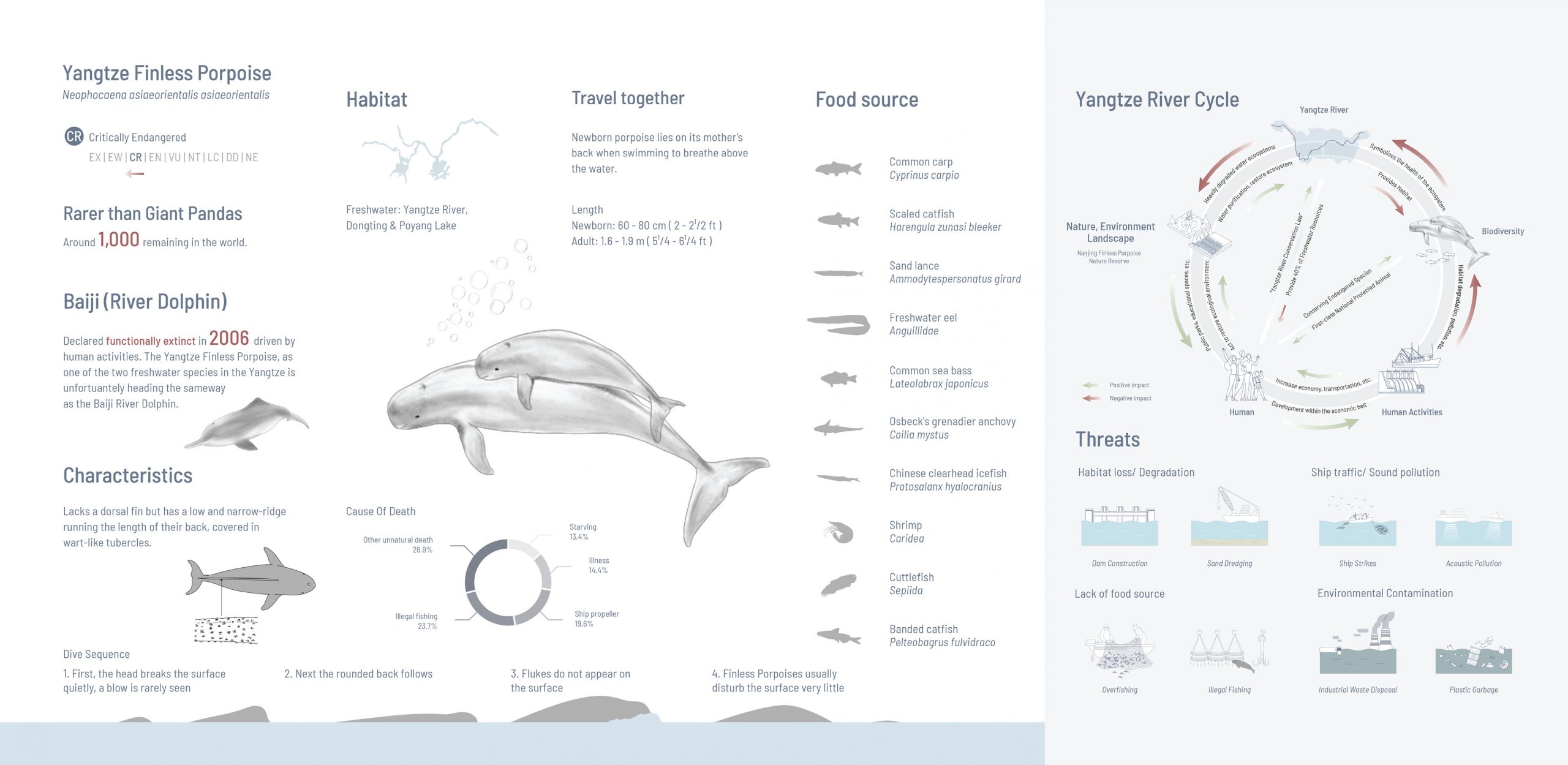
The interconnected cycle of the Yangtze river, human activity, and porpoise illustrates the damage we’ve done to the environment leads to the possible extinction of biodiversity within the Yangtze River, which will ultimately negatively impact us.
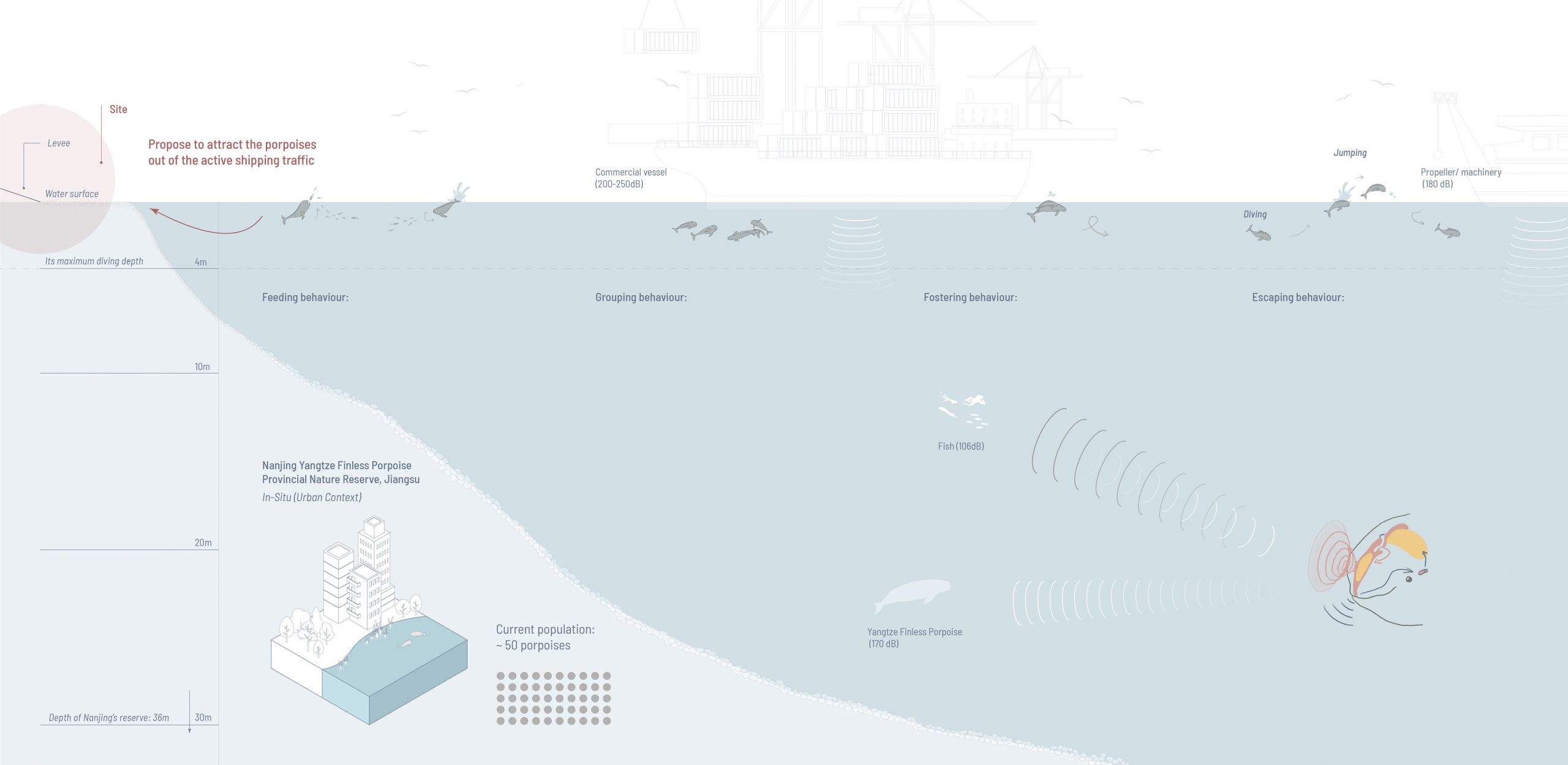
Porpoises prefer shallow and coastal water with a maximum of four-meter depth. Compared to other cetaceans, the sonar frequency of the porpoise is extremely high. They use echolocation to communicate and detect food sources.
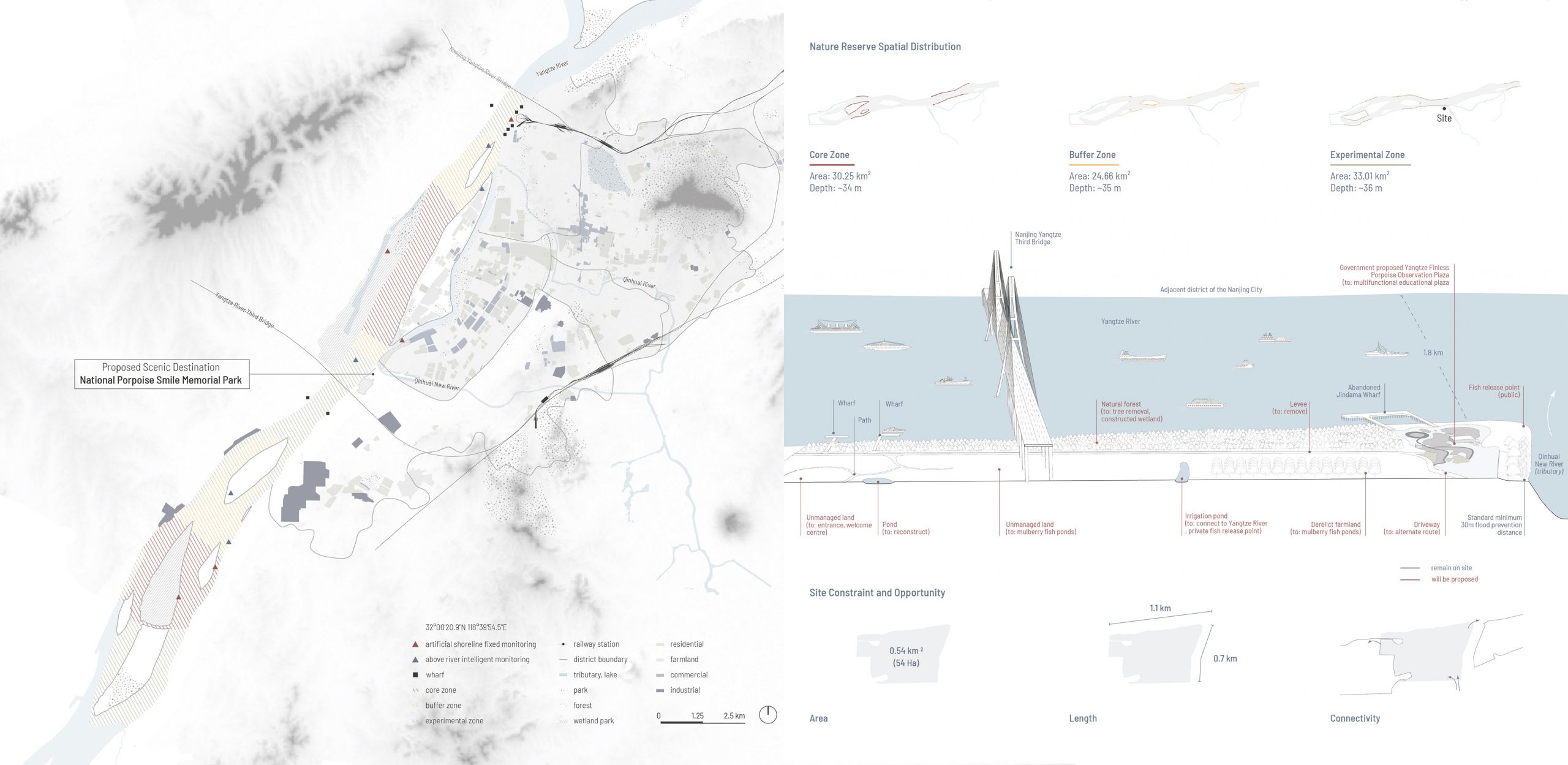
The current condition at the Nanjing reserve includes frequent shipping traffic sharing the river with the porpoises. The design proposal expands the chosen site beyond the government-proposed observation plaza, to effectively use adjacent abandoned land to revitalize porpoise habitat.

Design strategies
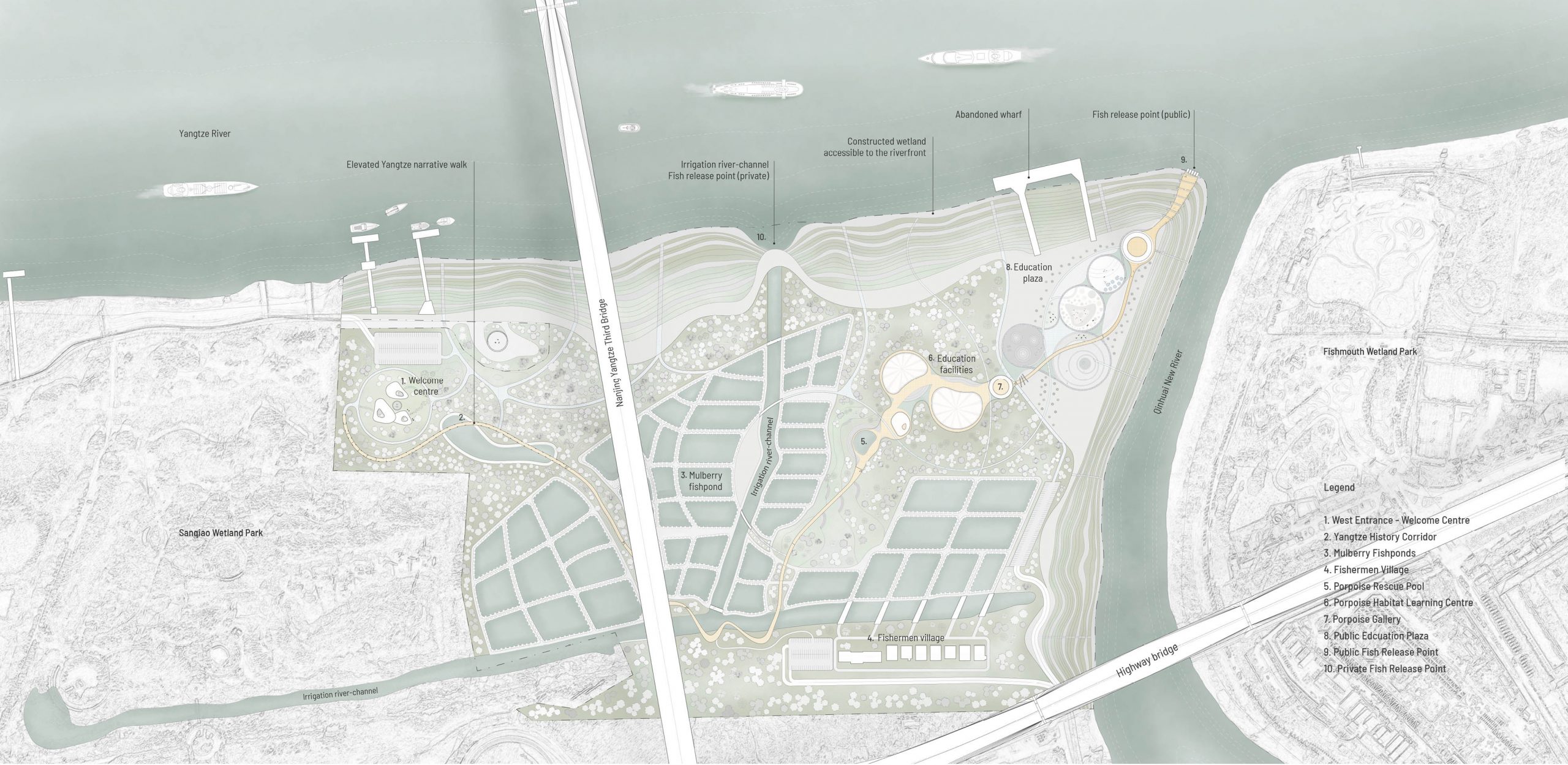
National Porpoise Smile Memorial Park – Master Plan
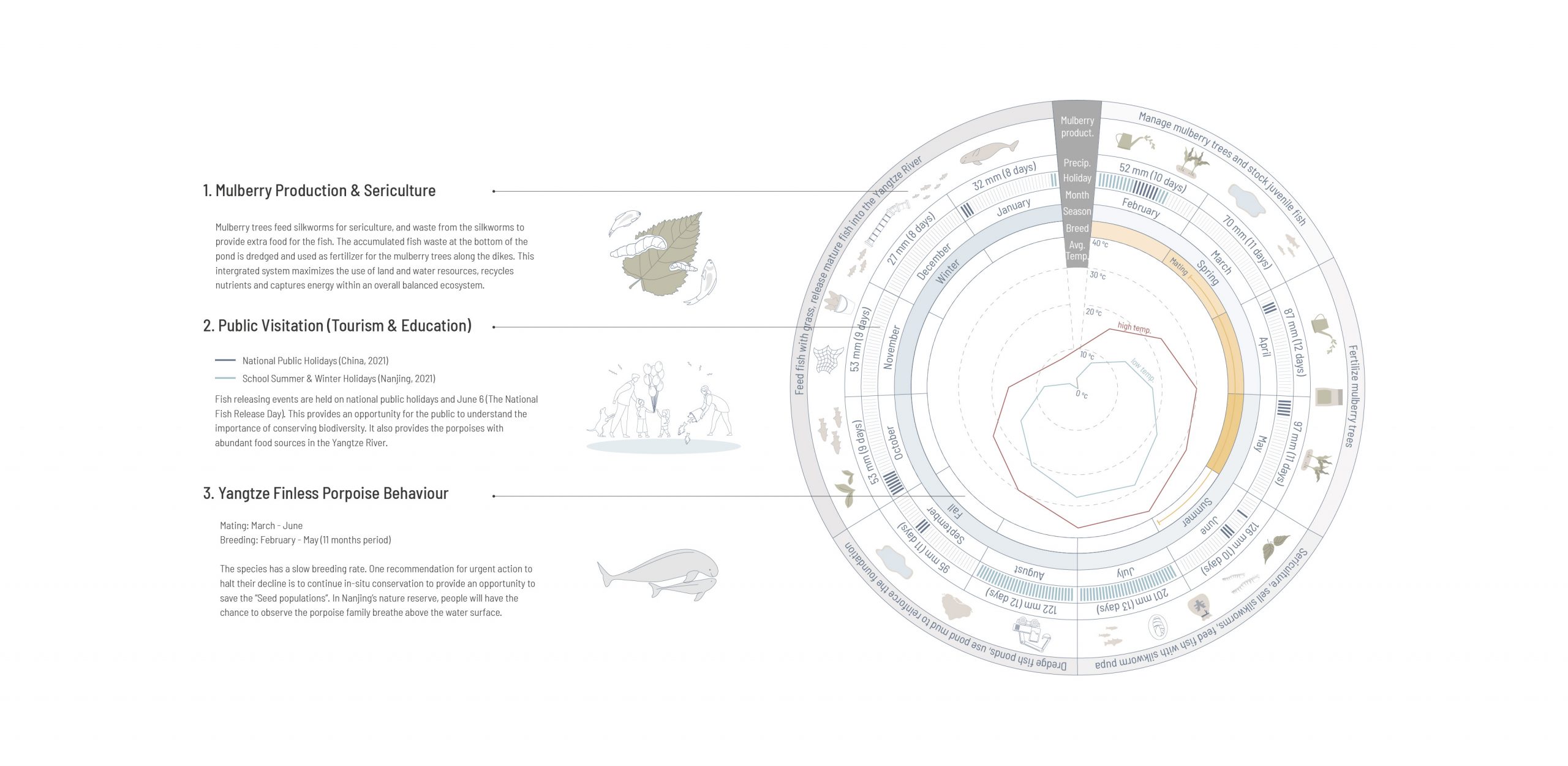
This dynamic cycle of the site shows the opportunities for intersection and engagement between different activity patterns.
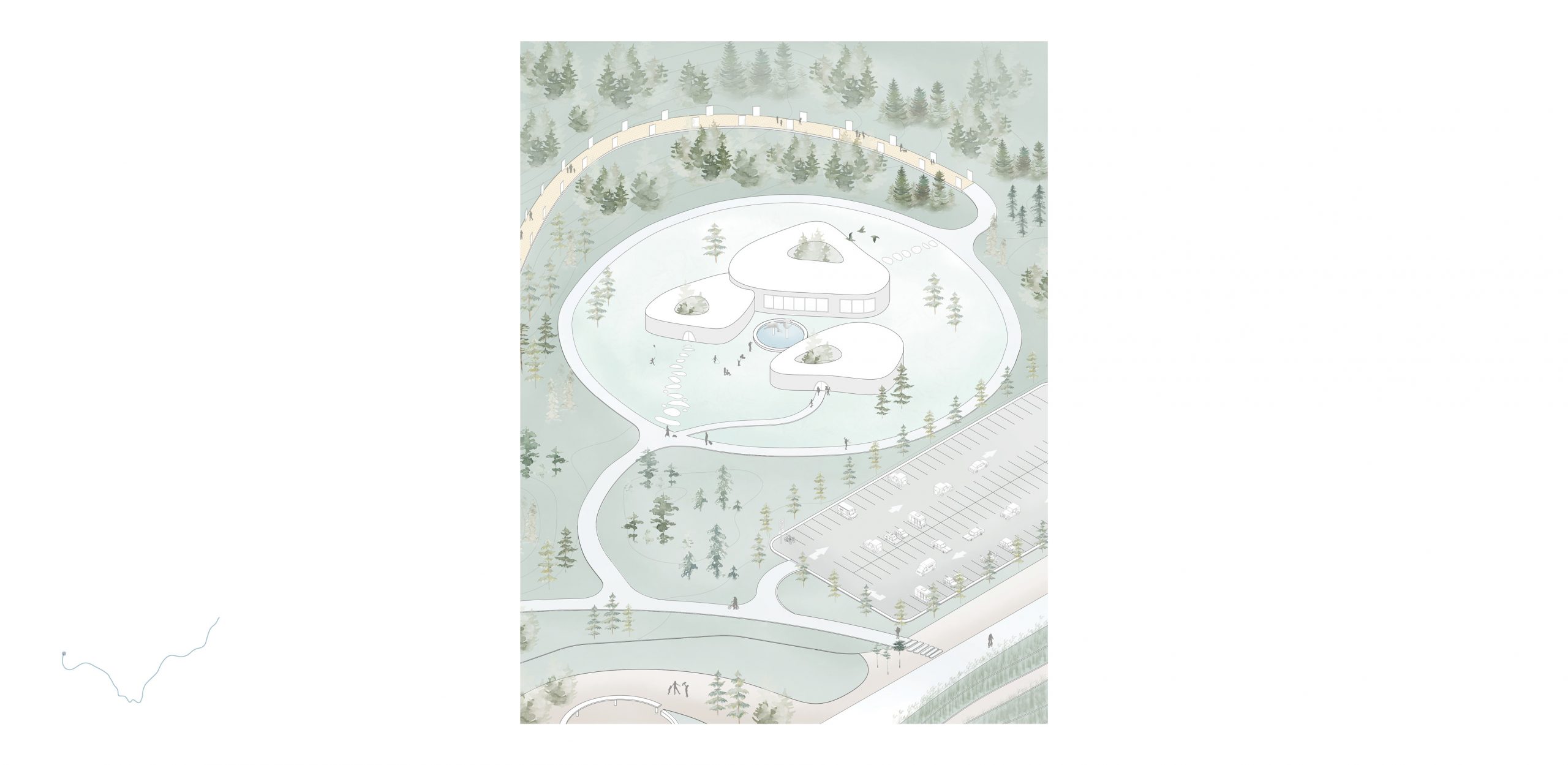
Representing the natural condition of the upper reaches, this area is filled with natural forest species and grasslands.
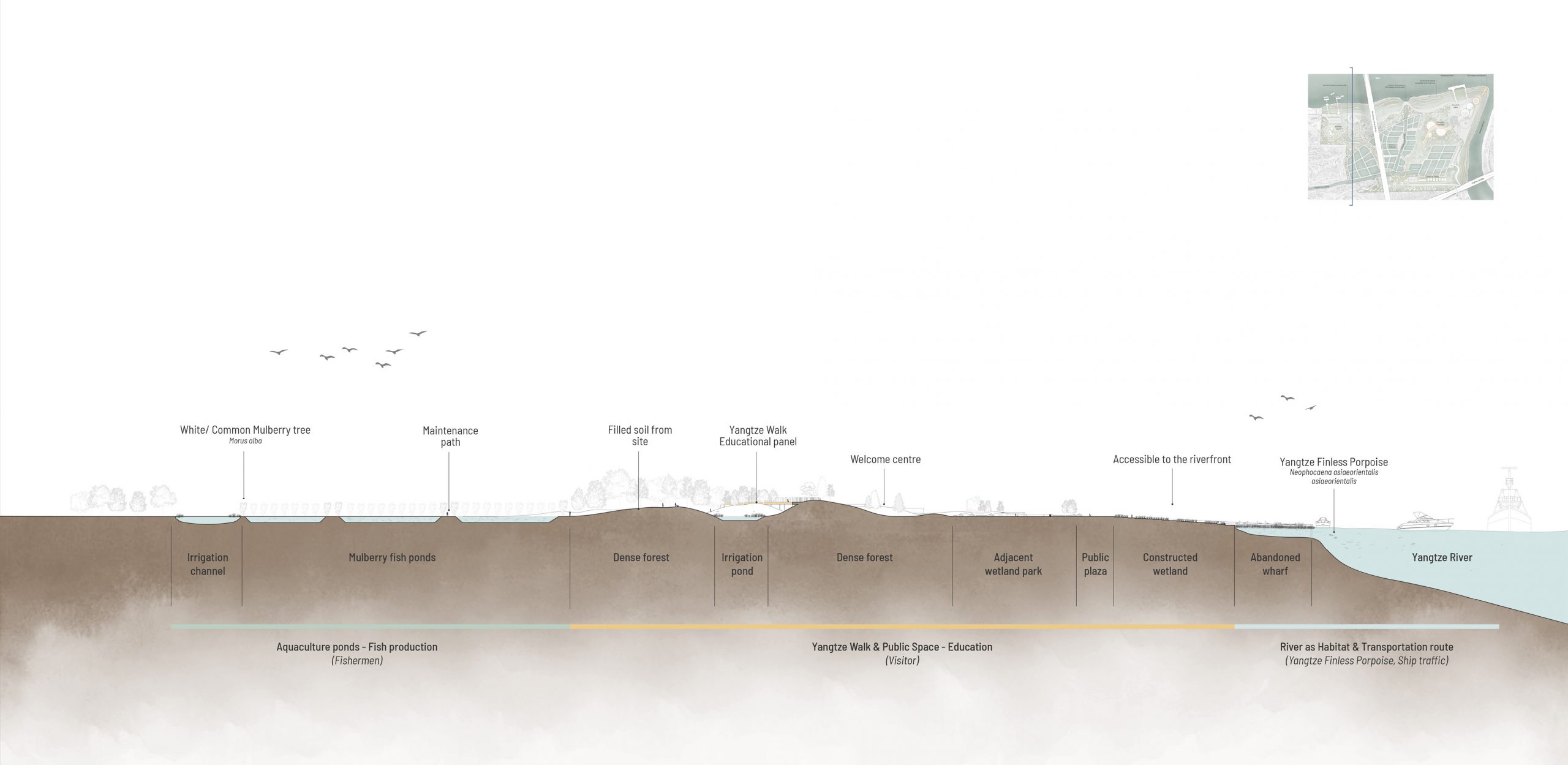
Starting from the upper reaches, visitors would begin to encounter the mulberry fish ponds, where the excavated soil is reused to fill the site to clarify legible elevation changes.
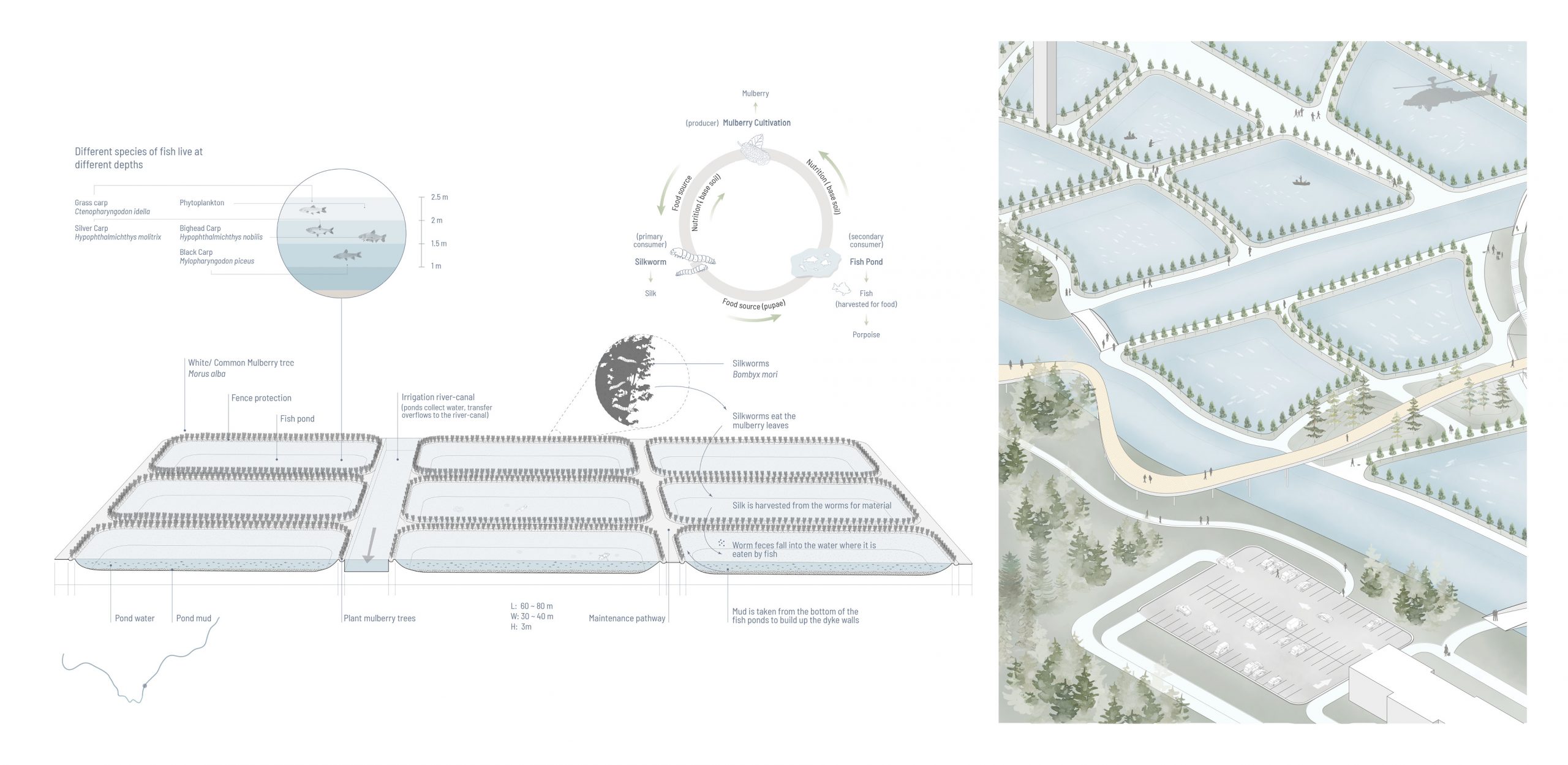
The mulberry fish pond is an ancient and complex multi-dimensional eco-agricultural system that originated in the Yangtze Delta and southern China. It functions as a part of a larger-scale reservoir for water storage, flood regulation and drought mitigation.

This section cuts through another entrance and access point in the middle reach, behind the mulberry fish ponds are the elevated Yangtze narrative walk path.
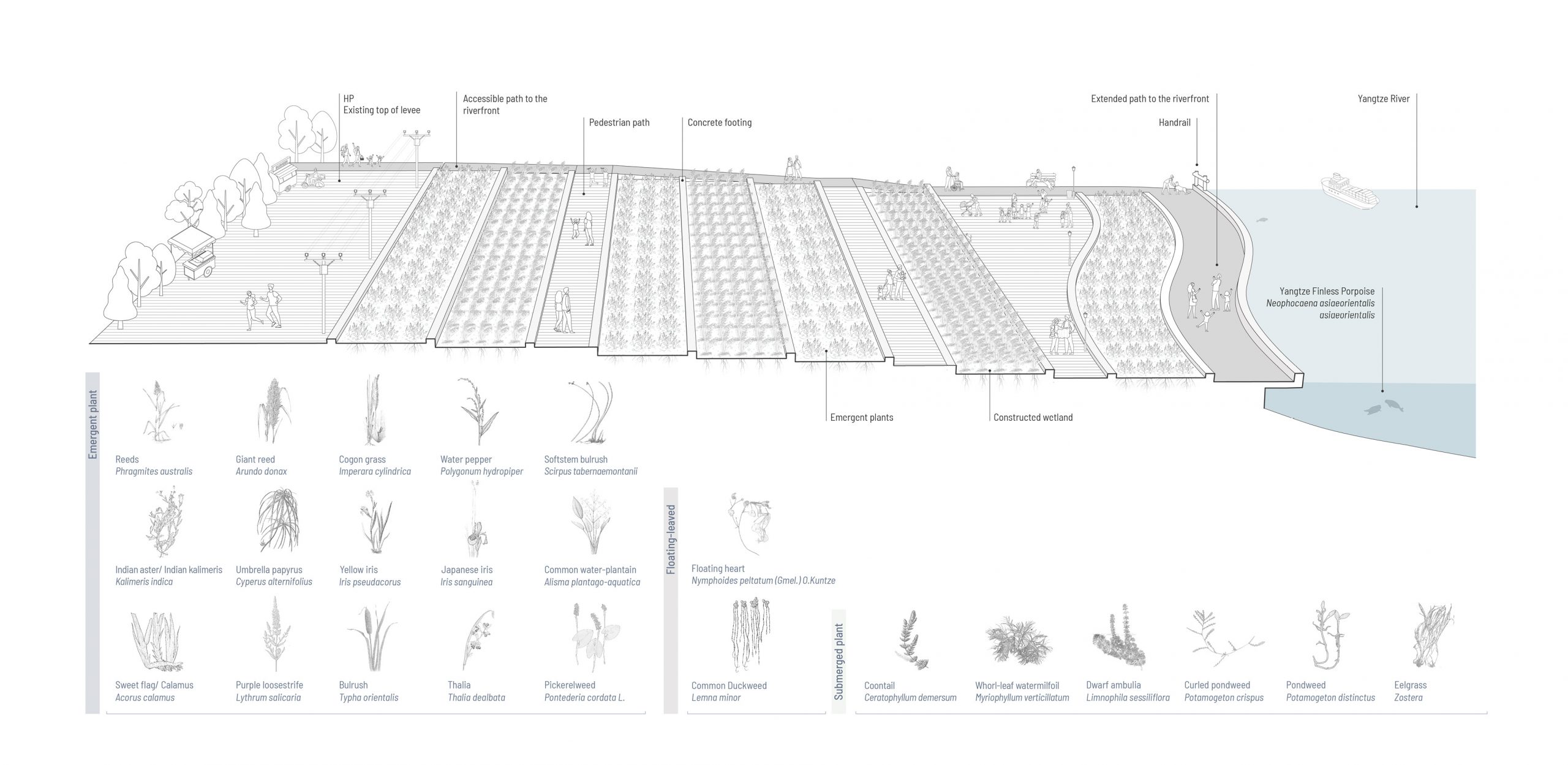
Constructed terraced wetlands create an edge condition that prevents erosion during the flood season, while making it accessible to observe the porpoises. Wetland species create a living edge that helps restore the transparency of the water favourable to the porpoises.

Any injured porpoises found in the reserve zone can be brought to the temporary pool for rescue and treatment. Fish tanks store the fish transferred from the ponds, ready to be released where the narrative walk meets the river.

This section cuts through the exterior education programs – the play spaces, event spaces and the plaza. During seasonal flooding, activities would not be affected, but people could observe the ecosystem being restored at the water’s edge.
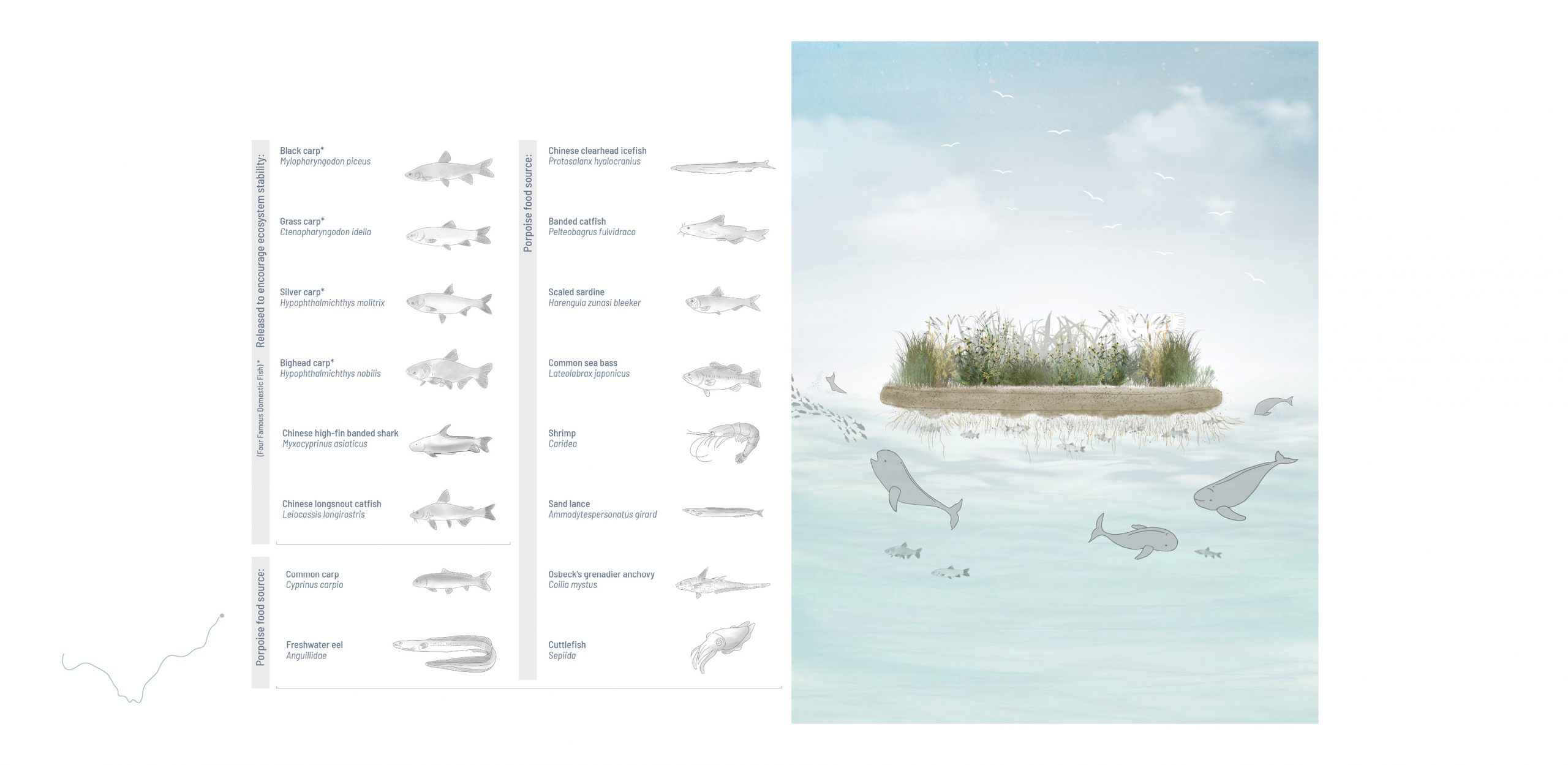
Enhancement and Releasing is an artificial way that directly releases juvenile fish, fish eggs or mature fish into natural waters such as oceans, rivers, lakes to restore or increase population numbers and maintain the stability of the ecosystem.
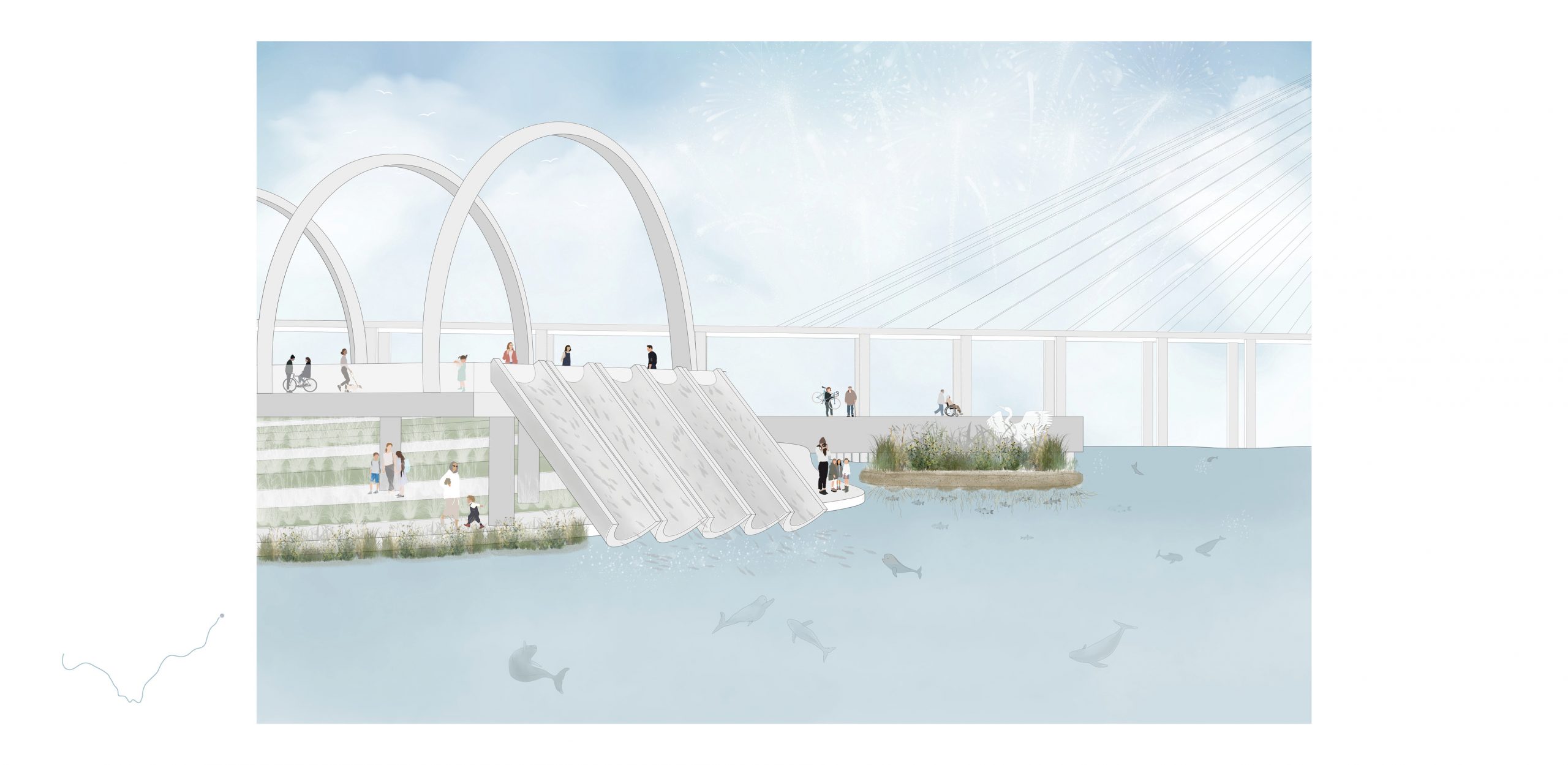
The end of the narrative walk is represented as the Yangtze River flowing into the East China Sea where the public fish release events happen. This circular arch represents echolocation waves as our way of communicating to the porpoises.
Conservation of the Yangtze Finless Porpoise has received widespread attention from the Chinese government, which has led to the establishment of national legislation that protects the Yangtze River’s ecosystem and this critically endangered species. Although restoring the Yangtze River’s ecosystem is a slow process, with the collective efforts of the government, scientists’ research, growing knowledge and public awareness, we can see a promising future in conserving the species’ remaining population. This project suggests that design can play a key role in bringing together the ecology and education necessary to facilitate this goal.


